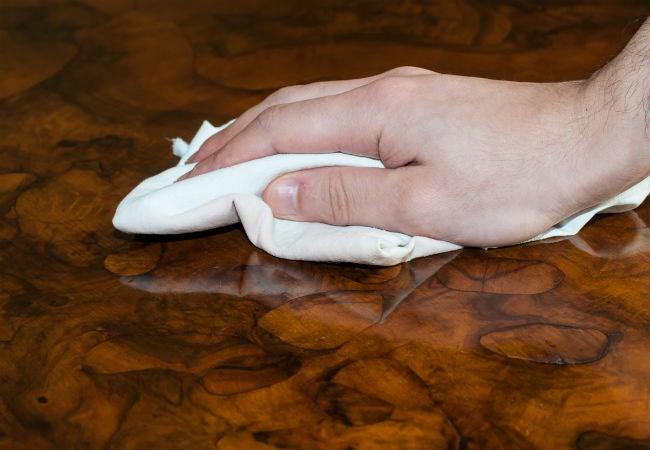All You Need to Know About French Polishing
Photo: istockphoto.com
If you’ve ever admired the extraordinarily glossy finish on an antique piece of wooden furniture or a wooden instrument such as a guitar or violin, you’re likely looking at wood finished with the French polishing technique. While you appreciate the good looks, you may also respect the hard work behind the fine finish. While it is a very time-consuming process and does take practice before you’ll reliably achieve the best results, it’s hard to match this time-honored method for producing a lustrous finish that shows off wood grain to perfection.
Photo: istockphoto.com
What is French Polish?
French polish is not a product. Rather, French polishing is a method of applying shellac to wood furniture, musical instruments, or decorative accents in many thin layers—typically well over 100—that results in a highly glossy, glass-smooth surface with a rich depth that beautifully highlights the grain of the wood. While it’s been around since the 1600s, French polish today has somewhat fallen out of favor, due to its labor-intensive process.
While you might be tempted to cheat by taking shortcuts, you won’t be using any sprays, brushes, or sponges for a true French polish finish. Nor will you be using polyurethane or other modern-day hard-and-shiny wood sealers. Instead, you’ll use a cloth dabber to apply the shellac, along with a few other basic supplies.
Made from a substance secreted by the lac bug—a species of scale insect native to Asia—shellac is suitable for any type of wood, but you’ll find it far easier to achieve the glossy, perfect French polish finish on hardwoods with closed grains, such as maple, spruce, and cedar. If used on an open-grain wood, such as walnut, mahogany, and rosewood, you’ll need to fill the grain with pumice powder, adding an extra step to the (already lengthy) process.
Advertisement
While there are certainly other methods of finishing wood that produce a glossy finish—including varnish, polyurethane, and high-gloss stains and paints—none of those produce the depth and richness of French polish.
RELATED: Is Varnish or Polyurethane the Right Finish for You?
Pros and Cons of French Polish
You’ll want to weigh the following advantages and disadvantages of French polishing carefully before embarking on the multi-day process. After all, while beautiful, there are scenarios in which it is not a suitable technique for your wooden furniture or accent.
Photo: istockphoto.com
On the plus side, French-polished shellac is durable and doesn’t require much in the way of polishing once dry. It’s flexible, so resists cracking, scratches, and wear—a definite advantage if you drop your keys onto a shellacked table, for example. Shellac also dries quickly and is nontoxic. It won’t yellow over time, as varnish will, and it’s fairly easy to patch up your French-polished piece without leaving obvious signs of repair. While shellac is naturally amber to orange, you’ll also find bleached shellac that’s useful over light-colored wood like maple.
On the downside, however, shellac burns if exposed to high heat—such as a hot plate set down without a trivet. It also develops white rings or patches if subject to high humidity or liquids, meaning it’s risky to French polish a coffee table or any piece of furniture that might gather drips or condensation. Nor would you want to French polish anything too close to a high-humidity area, such as the bathroom or kitchen. In fact, before you even start your French-polishing project, you’ll want to check the weather report and postpone if the day calls for rain or high humidity. Finally, shellac is also damaged by alcohol, so this isn’t the best choice for counters or furniture in your home bar.
AdvertisementYou should also take your own experience into account. If you are a newcomer to woodworking or don’t have the time or the patience for a lengthy process, French polishing isn’t the best technique for you. Instead, consider staining or varnishing your piece, then sealing it with a coat of glossy polyurethane. While the finished project won’t have the same level of depth and rich gloss as French polish, the process is far easier and faster.
Need a hand refinishing furniture?Get a pro to do it for you. Get free, no-commitment project estimates from licensed furniture refinishers today. Find local pros+Pro Tips for French Polishing Wood
Photo: amazon.com
RELATED: 8 Ways to Age, Distress, Gild, and Add Shine to Your Next Project
Photo: istockphoto.com
Congratulations! The finished project is sure to be a stunner, and you can now add French polishing to your repertoire of woodworking and do-it-yourself skills.







